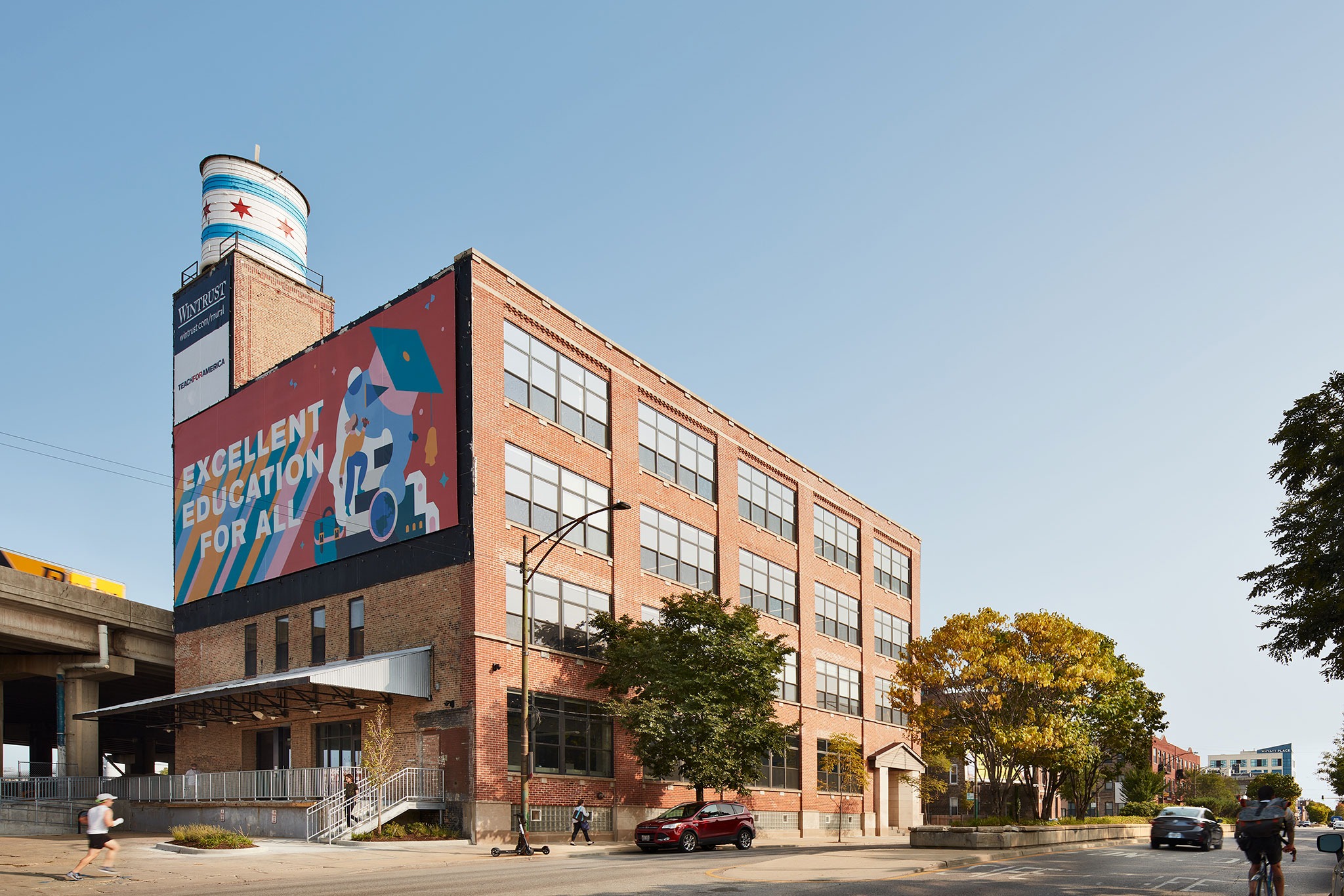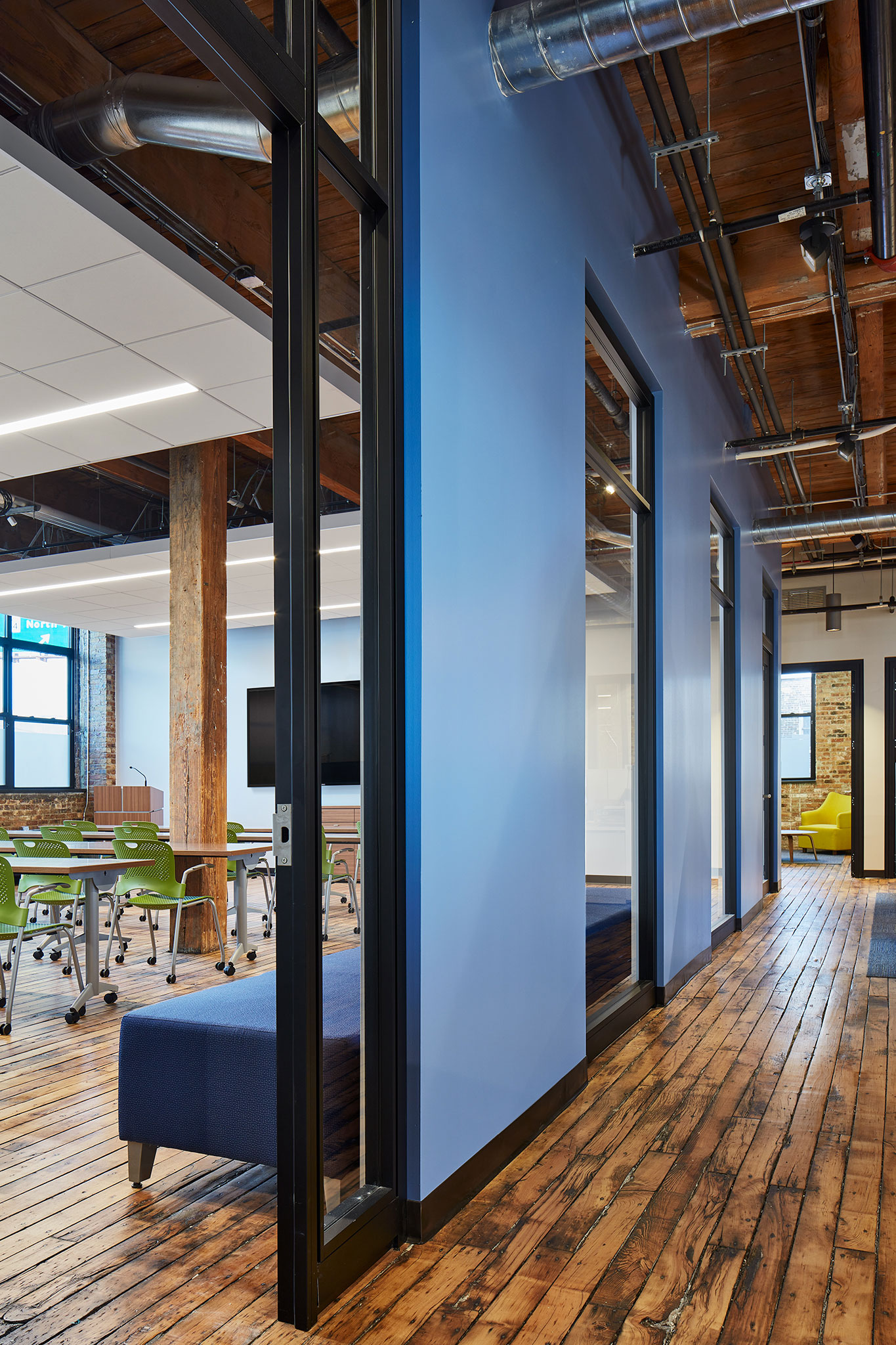Story at a glance:
- Non-toxic materials, VRF systems, and smart window treatments are among the sustainability-focused features of this adaptive reuse project in a former manufacturing building.
- Throughout the building, 95% of regularly occupied spaces have a connection to daylight.
- The new Night Ministry headquarters offers ample space for guests as well as staff, allowing all Night Ministry employees to work under one roof for the first time.
Wheeler Kearns Architects designed The Night Ministry’s new home with security and independence in mind for the young adults who seek refuge and recovery in its walls. The architects renovated three floors of a former manufacturing facility in Bucktown made of heavy timber to provide a refuge for 18- to 24-year-olds facing poverty or homelessness.
The new headquarters is located in Bucktown’s “Mural Building,” whose brick facade is recognizable by the large murals on three sides. Inside, The Night Ministry works toward their mission to accept people as they are and offer health care, housing, and human connection to those in need.
“The Night Ministry’s new home revitalizes an underutilized building, known for the murals that adorn its exterior, into a welcoming and safe community asset. We carry the artistic legacy of the building inside, where bright and colorful interior mural walls help create an inviting and optimistic space for The Night Ministry’ staff, volunteers and clients,” says Erica Ulin, the project lead at Wheeler Kearns.
The Night Ministry headquarters offers an overnight shelter called “The Crib,” a serving kitchen and dining space, administrative offices, meeting rooms, and multi-purpose programming space for social services, job assistance, and social activities.
The renovation is an adaptive reuse project that repurposes the heavy timber masonry of the four-story building to sequester the carbon and embodied energy it holds. The floors and windows were repurposed to reduce waste as well.
The new space is furnished with variable refrigerant flow systems for heating and cooling, non-toxic paints and low VOC sealants, high-performance collar screen shades that mitigate heat gain and reduce cooling, and more.
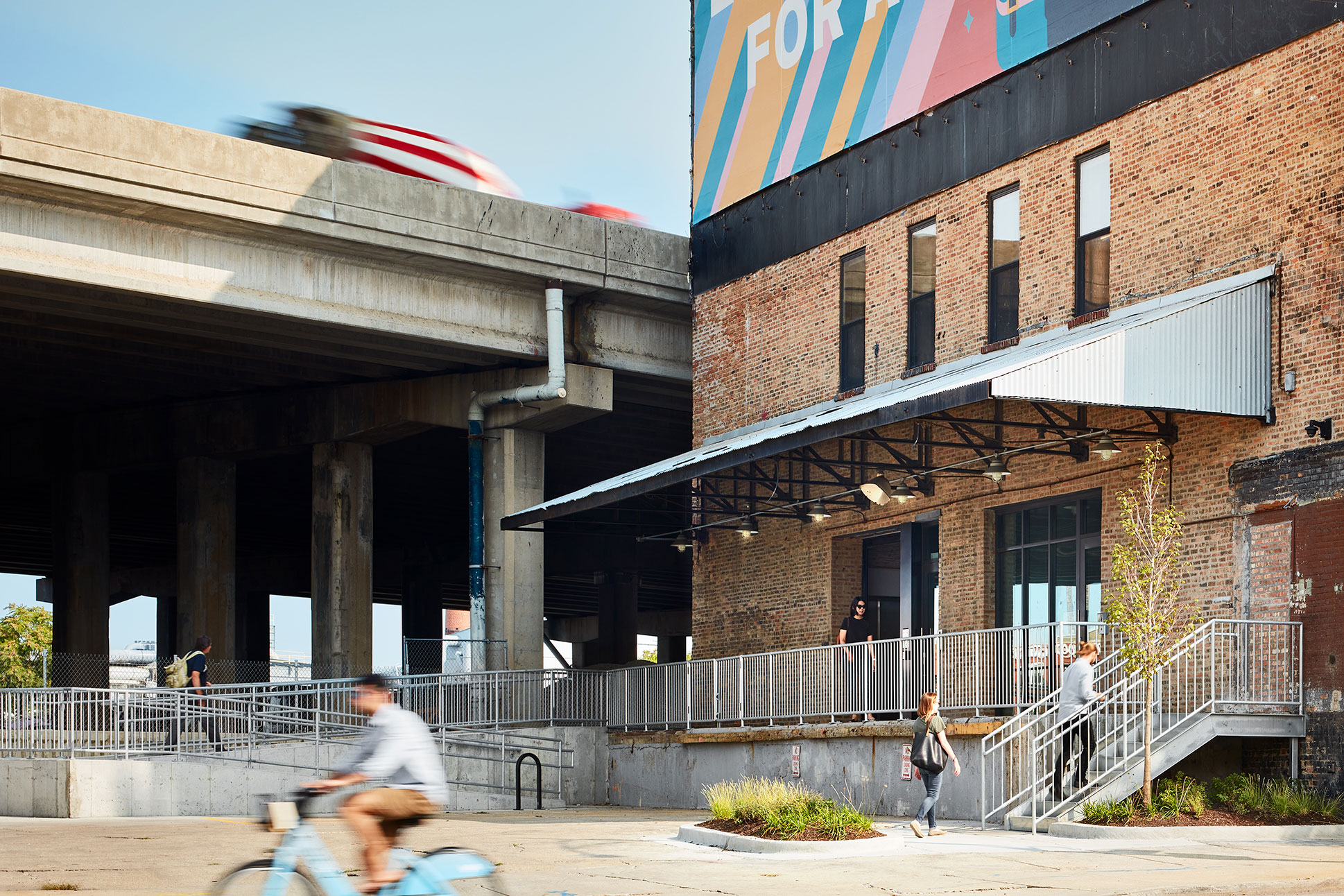
The entrance is protected from the street for privacy and security. Photo by Kendall McCaugherty, Hall + Merrick Photographers
The bright interior and exterior convey the open, welcoming, and trusting nature of the environment. The trusting element of the space comes into play in the windows, which offer glimpses inside from the street to lift any stress and helplessness that guests may be experiencing.
Entering through a former loading dock with a large awning, set back and protected from the busy street on the north side of the building, guests are intended to immediately recognize The Night Ministry as a safe space.
- Corridor space is limited to allow for easy sightlines and openness. Photo by Kendall McCaugherty, Hall + Merrick Photographers
- The open sleeping space is monitorable from a small glass-enclosed workspace. Photo by Kendall McCaugherty, Hall + Merrick Photographers
The first floor, featuring The Crib, is designed with minimal corridor space for an open space with sightlines that increase visibility as well as monitoring. This hopes to imbue guests with a sense of emotional and physical safety.
Private spaces including the sleeping room, showers, and restrooms are located at the back of the building for privacy. Thanks to the open plan, a staff member can easily and unobtrusively monitor both the sleeping hall and dining area in a small glass-enclosed workspace.
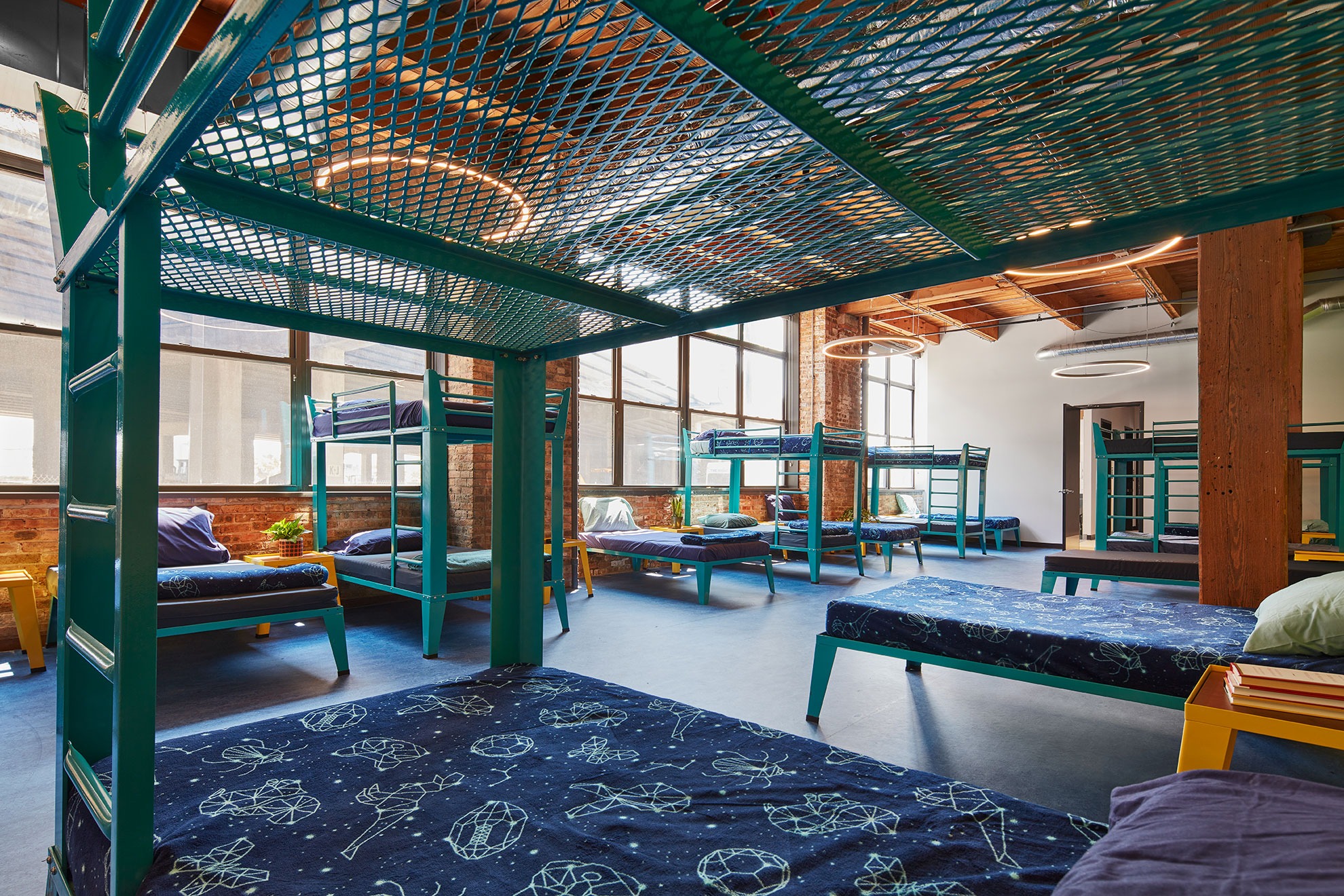
Natural light floods the sleeping room of the adaptive reuse project during the day, bringing warmth and wellness. Photo by Kendall McCaugherty, Hall + Merrick Photographers
The Crib is equipped with beds and tools for tending the physical needs of guests, but also tends to their overall wellness by inviting natural daylight in through the massive windows. In the sleeping room, high-performance solar screen shades not only assist the building’s daylighting efforts, but also help guests block out any noise and light from outside to rest and recover at night.
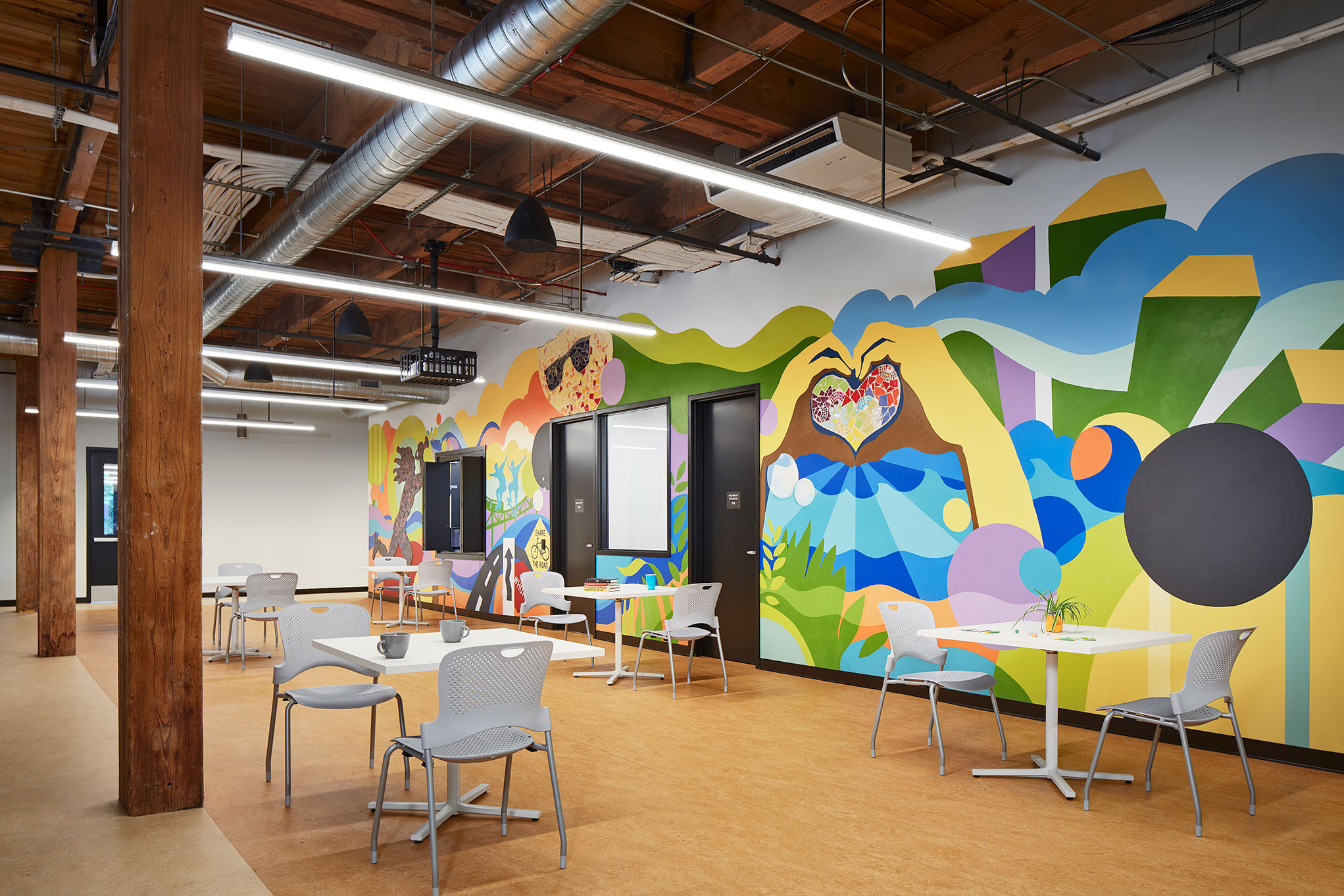
The murals of the facade make their way inside, bringing vibrance and a welcoming nature to the multipurpose/dining room. Photo by Kendall McCaugherty, Hall + Merrick Photographers
Interior clerestory windows allow natural light to make its way through the meeting rooms and private offices that face the street and park and into the brightly painted central multipurpose/dining room, creating a vibrant and positive space.
We carry the artistic legacy of the building inside, where bright and colorful interior mural walls help create an inviting and optimistic space for The Night Ministry’ staff, volunteers and clients.
Throughout the building, 95% of regularly occupied spaces have a connection to daylight.
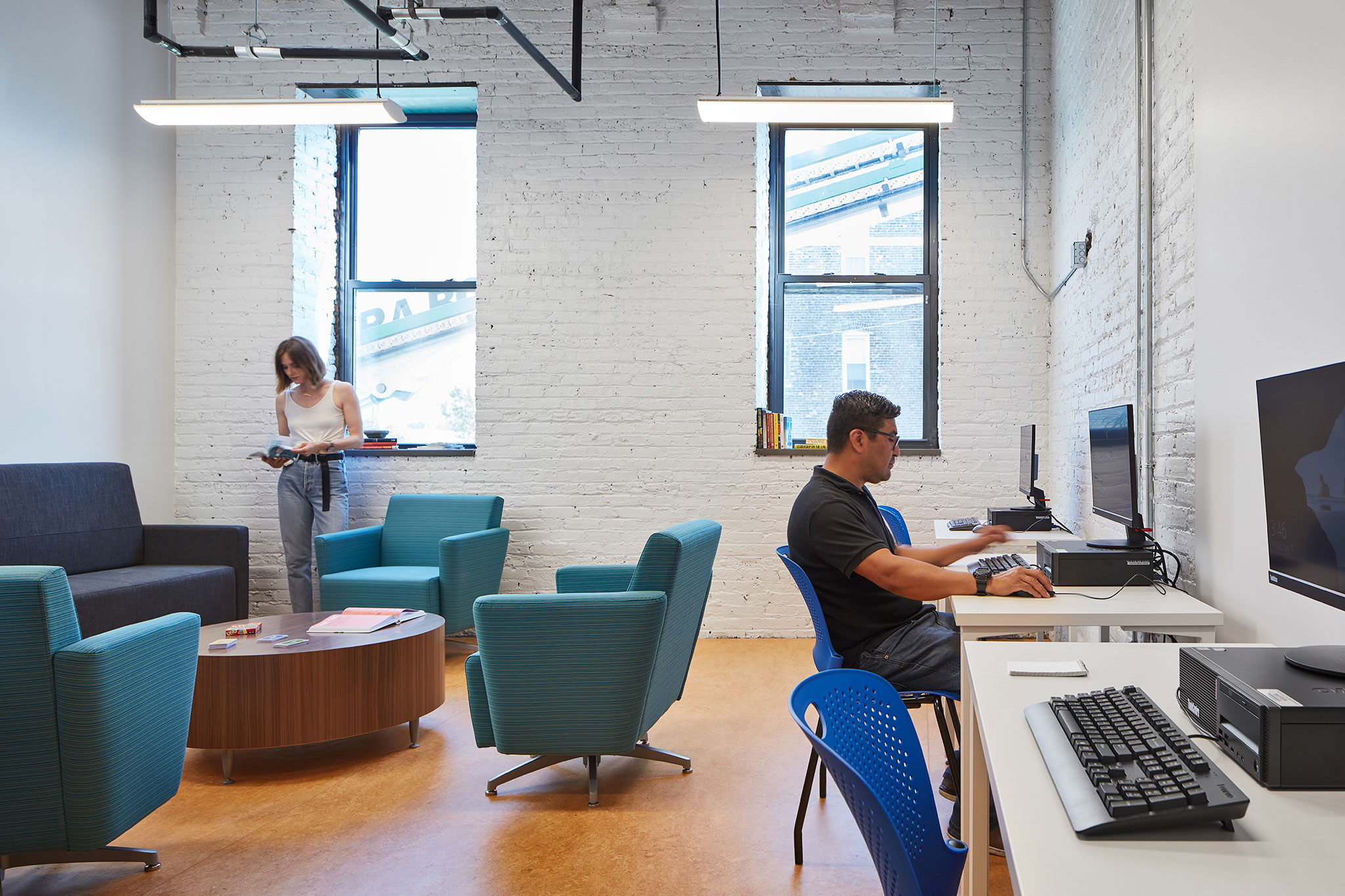
In the new headquarters, all Night Ministry employees and volunteers work under one roof for the first time in the organization’s history. Photo by Kendall McCaugherty, Hall + Merrick Photographers
The Night Ministry adaptive reuse project occupies the second and third floors of the building. There, open offices connected by a new central communicating stair allow employees and volunteers to work together in one space, under one roof for the first time since the organization’s founding. Even off-site teams including the health outreach and street medicine teams are able to use the headquarters to touch base with other staff.
Additional support spaces include individual phone booths, small meeting rooms, workrooms and a large conference room that can hold all-staff and full board meetings. These spaces provide varying levels of privacy and gathering, and are positioned in the building to reflect that.
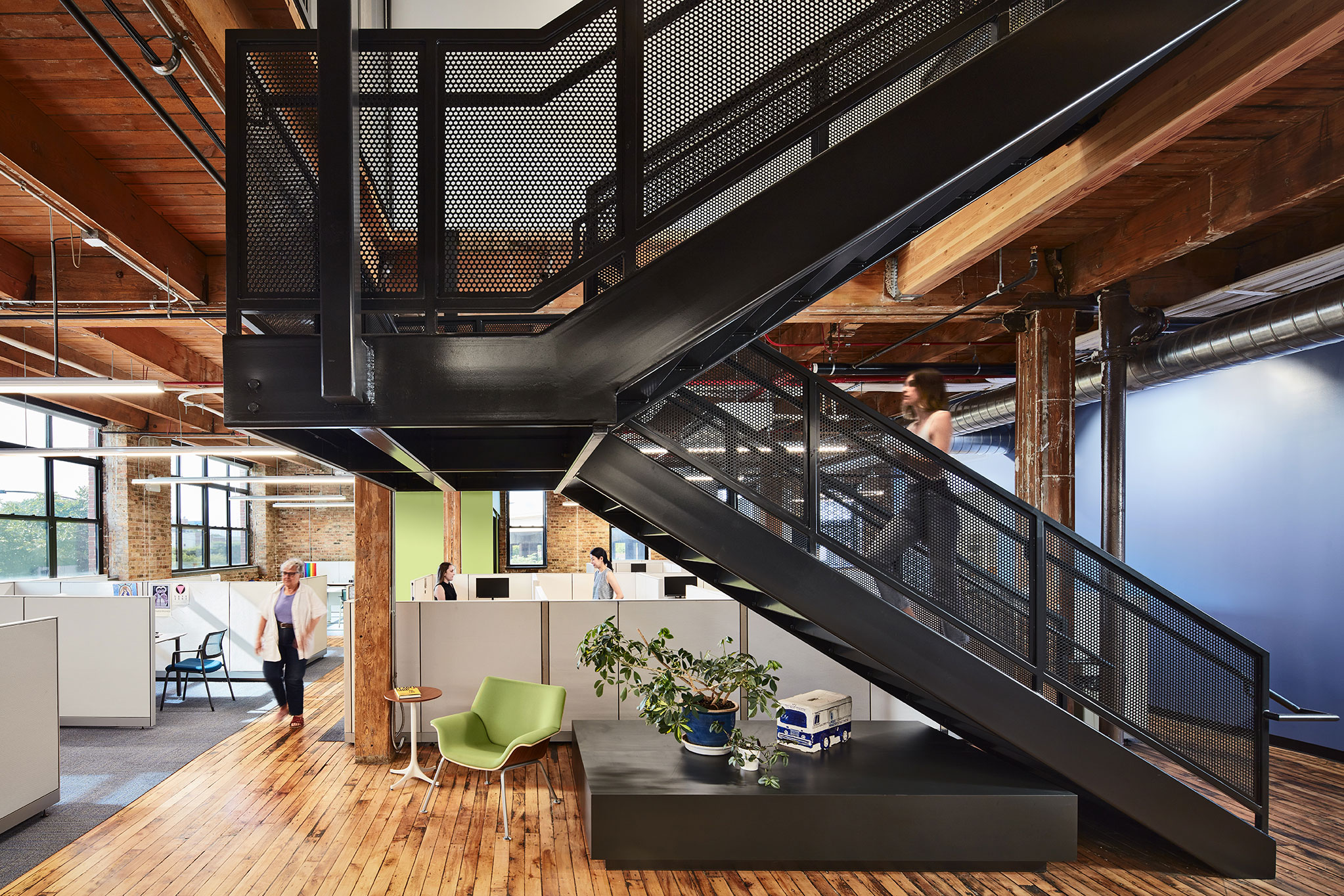
The central stair connects the floors of the building. Photo by Kendall McCaugherty, Hall + Merrick Photographers
Throughout The Night Ministry headquarters, non-toxic materials provide healthy and durable spaces. For example, linoleum flooring on the first floor is manufactured from renewable, biodegradable materials.
All lighting fixtures in the building are LED for energy efficiency, and occupancy sensors provide automatic lighting control in all rooms to cut down on money and energy costs. Digitally programmable thermostats maximize energy savings and comfort at once, and a sustainable landscape combats the urban heat island effect to top off the building’s sustainable features.
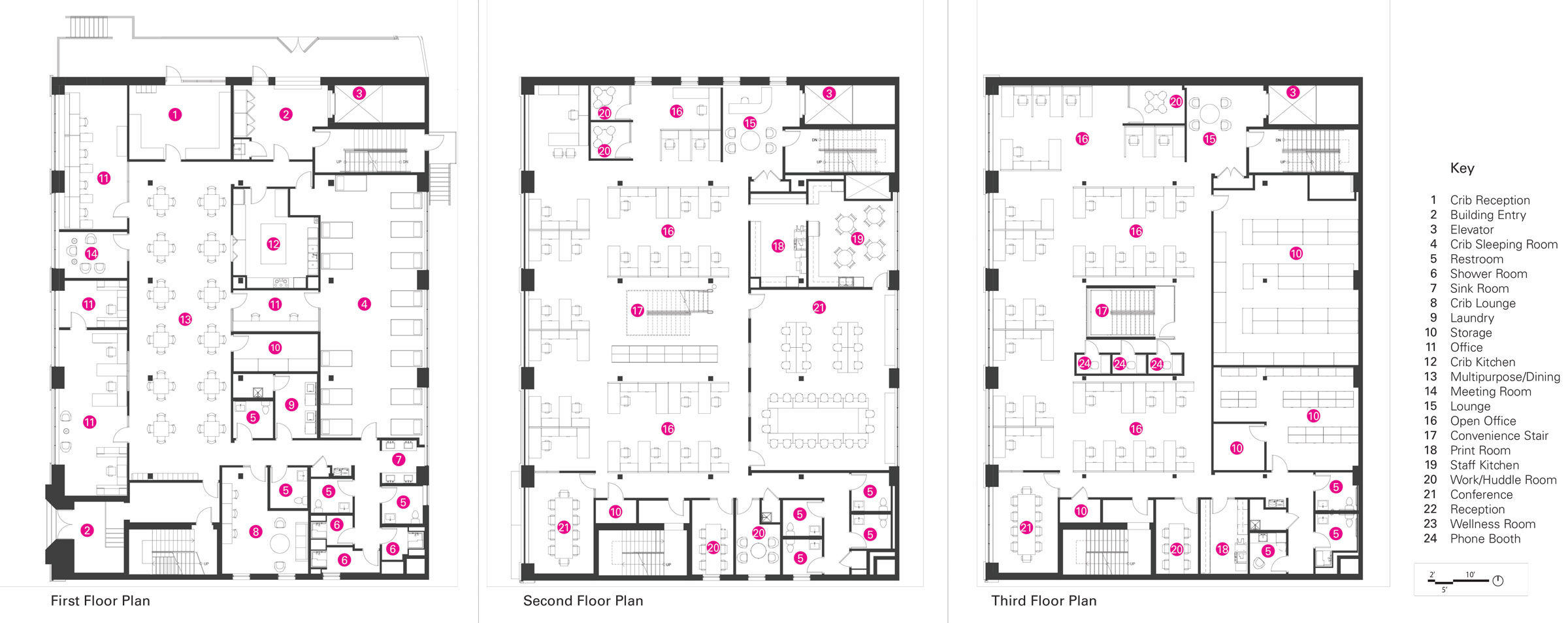
Floor plan courtesy of Wheeler Kearns Architects
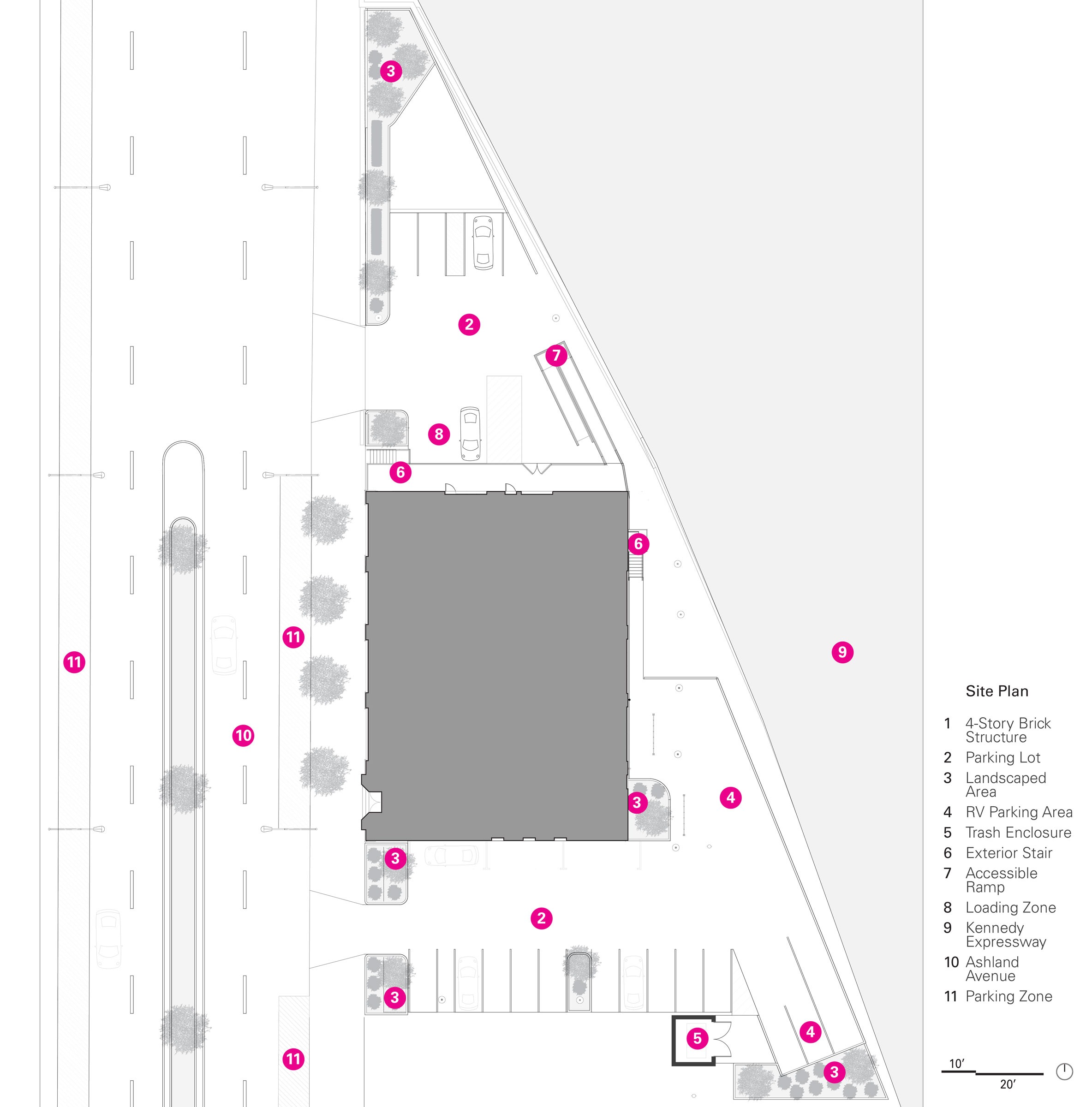
Site plan courtesy of Wheeler Kearns Architects

